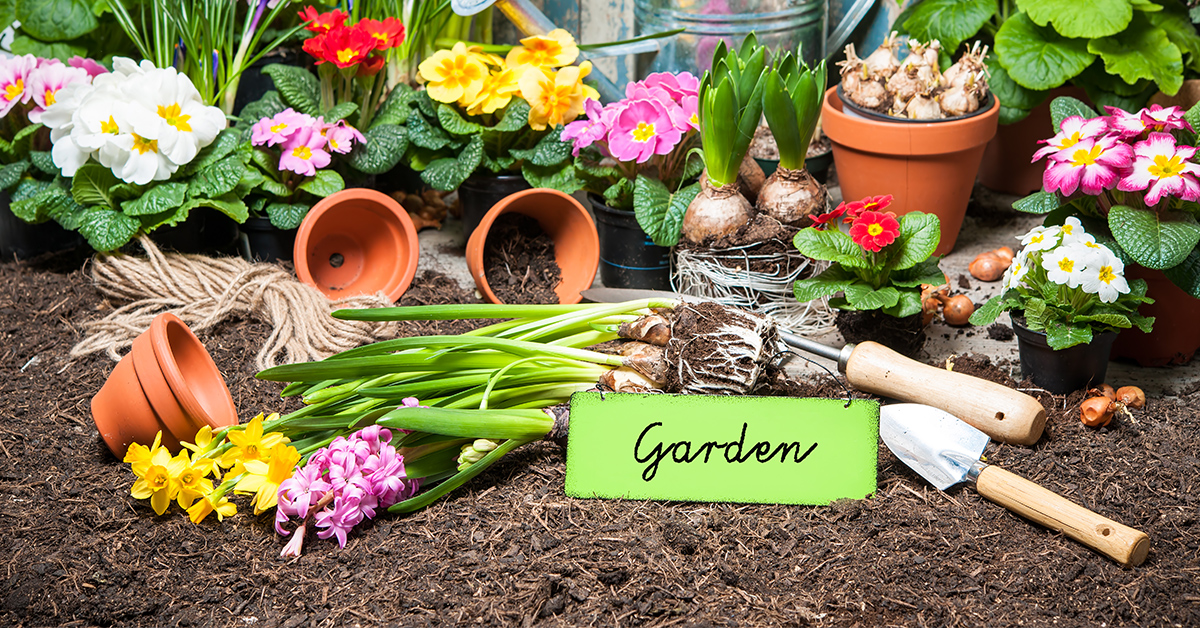
We can’t say we’ve had a rough winter here in Florida, but we know that’s not always the case for everyone around the country. Many states have had mild winters, but other have had their usual time buried under feet of snow. So now that spring is just around the corner for many of our customers, we thought we’d take some time and make note of some of the best ways to prepare now that your yard is coming back to life.
Start Your Seeds
If you’re yearning for spring so that you can get back to garden plants, you don’t have to wait! Start seedlings inside, keep them warm and well watered, and keep the pets away from them. Once it’s time to transplants them to the outdoors, make sure to put them outside and bring them in when it gets too cold. Plants that haven’t been “hardened” will die quickly due to the shock of cold they’ve never felt before. Click the following link to head to a Burpee article about hardening seedlings.
Start Part of the Garden Now
There’s a common rule in most of the country that says you shouldn’t plant your tomatoes until after Mother’s Day. And because tomatoes are the most common plant in home gardens, many people think that the garden can’t start until the tomatoes are in. Luckily, this isn’t the case. There are many plants that can do well in cold weather that you could be planning right now (or at least very soon). These include peas, carrots, cauliflower, brussel sprouts, radishes, and most leafy greens including cabbage, spinach, and kale. When planting, may we suggest this Fiskars multipurpose garden knife that works as a trowel, bag cutter, and sod cutter.
Clean Up Flower Beds
That mulch and those dead leaves might have been good protection during the winter months, but now is the time to clean up your flower beds. It’s possible you even left the dead flowers and stems on plants that come from bulb, but when the days get warm you’ll want to get in there and cut out the dead material with grass shears or pruners. The same can be done with roses. When you’re dealing with only dead material you don’t have to worry about accidentally taking off something that’s green.
Deal With Pests
Would you rather deal with rose aphids now or when there are blooms on the plants? Wouldn’t it be nice to take care of the grubs before the grass greens up? Read up on pests that have bugged you in the past and find out if you can eradicate them while they’re overwintering. Better to kill hundreds of them now than mess with thousands of them during the spring and summer.
Get Those Rain Barrels Ready
Most states allow some form or rainwater collection. While the amount you can keep might be limited, it will still save you money on your water bill and you’ll be able to give your plants water that hasn’t been chemically treated. Just make sure that you make plans to prevent the water from becoming a mosquito breeding ground.
Fix Everything
When there are warm days but nothing to do in the actual garden or to your landscaped plants, get out the hammer and start fixing anything that might have suffered during the winter. Put new nails in that gate that worked loose, replace and paint the rotted board in the fence, and grind off the rust that formed on the shovel over the winter. Your peas will certainly be happy that you fixed the trellis.
Sharpen Those Tools
We’ve talked about the benefits of keeping your tools sharp. The sharper a tool is, the cleaner a cut it will give you. When you get a clean cut, you’re less likely to tear the branch you’re working with, meaning that you’re damaging the plant less and preventing diseases and pests from taking advantage of the situation. Here at Frostproof we offer a good selection of sharpening stones for pruners, loppers, and other gardening equipment.
Work That Compost
Most of us who compost absolutely love it. Food scraps that used to be tossed in the trash now go to feeding our garden. There’s nothing like tossing heavy watermelon rinds into the composter and seeing them vanish within the month! All winter long the compost has been building up from those winter vegetable soups, and now it’s time to start it up again.
Of course, turning the compost can be a problem. The composters with a crank often fall apart, and the ones that sit on the ground usually don’t allow enough leverage to get a good dig. This Yard Butler twist tiller offer a great solution, allowing you to “till” your compost without needing to use your shovel at a weird angle. While you’re doing that you’ll most likely find some nice compost in the center that’s ready to put on your garden. Just take out the avocado seeds first! (Because those aren’t going to compost for a long time…) And after you put the compost on the garden...
Turn the Soil
As difficult as turning the compost can be, turning the garden can be cathartic. The rain and snow have compacted the soil during the winter, just as your feet did during the summer. Turning it allows the lower soil to warm up and receive more air. Use a gardening fork or shovel to turn the soil. Pick up some worms and let them wiggle around in your hands, because worms are awesome! Distribute that compost you made as much as possible.
This is also a good time to use a pH meter to find out the acidity of your soil and alter it to the interest of the plants you want to plant. (Tomatoes, for instance, like a soil that’s slightly acidic.) If it’s not to your liking, read up on the internet on the best ways to change the acidity of your soil.
The fun is about to begin in your yard, and Frostproof Growers Supply is here to help. Check out all of our gardening tools right here!


